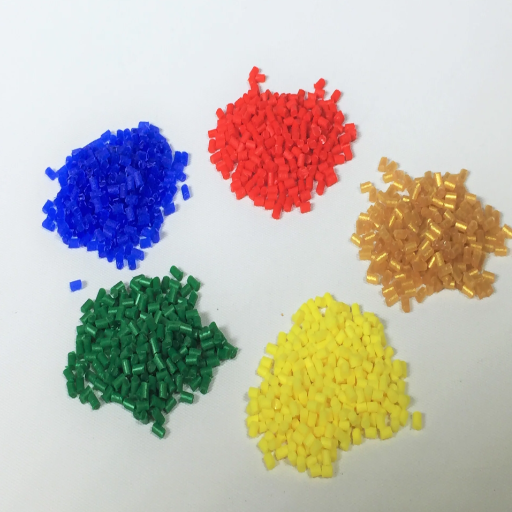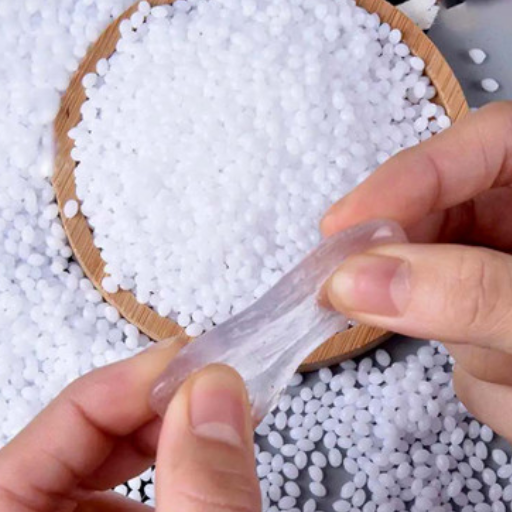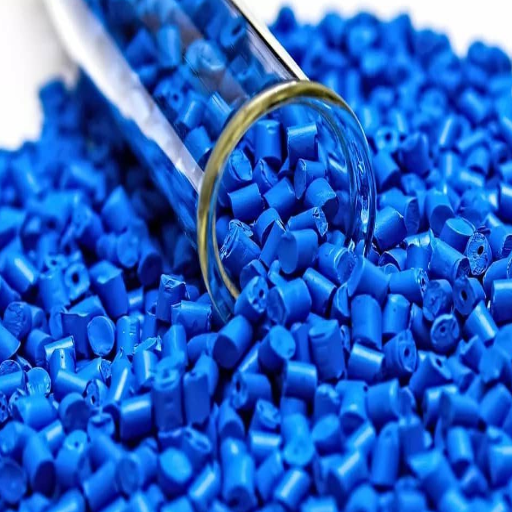Polypropylene (PP) occupies a dominant position in thermoplastic polymers, which several industries use. This paper seeks to give an overview of polypropylene, emphasizing its composition, material characteristics, and applications. To deepen their perspectives on PP being pertinent in industries such as packaging, automotive, textiles, and healthcare, readers need to appreciate its thorough properties, such as mechanical strength, thermal resistance, and ability to be recycled. Moreover, this blog will examine the role of polypropylene production on the environment and the recent trends in its development and use, providing a complete viewpoint on the role of this material in today’s economy and in practices of environmental protection.
What is Polypropylene (PP) and How is it Made?
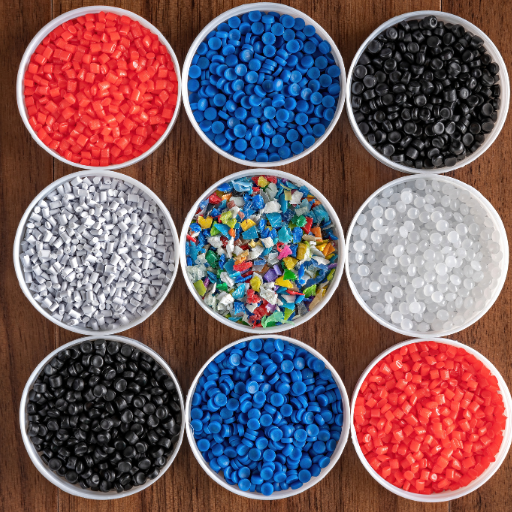
Polypropylene (PP) is one of the most widely used thermoplastic polymers owing to its flexibility and strong features, which it was acquired after undergoing polymerization. The polymerization of PP is achieved through propylene, which is an organic compound obtained from petroleum or natural gas. These processes are usually catalyzed by, for example, Ziegler-Natta systems or metallocene systems, which enable control over the polymer’s molecular structure. As a result, the polymer formed is chemically stable, can withstand high temperatures, and is of high mechanical strength, enabling it to be used in various industries ranging from packaging to car components and medical instruments.
Investigating the Chemistry of PP’s Composition
Polypropylene, colloquially known as PP, is a polymer made from combining repeating units of propylene monomers with the ideal conditions for polymerization, in this case (C3H6)n. The polymer features a semi-crystalline molecular structure that aids in its mechanical enhancement. The three most common classifications of PP based on activity are isotactic, syndiotactic, and atactic. Owing to its crystalline morphology with all methyl groups placed on one aromatic ring in the polymer backbone, the isotactic variant of PP is the most widely utilized over other types.
PP’s most important technical characteristics include the melting temperature, which varies between 130 °C and 171 °C, and the density, which is about 0.90-0.92 g/cm3, which is why this polymer is considered a low-weight material. The material’s tensile strength lies in the range of between 25–40 MPa, which depends largely on the molecular structure and the processing conditions. These chemical and physical properties derive from the non-polar nature of the polymer backbone which protects it against a wide range of acids, alkalis and organic solvents. These features endow PP with a vast range of applications in the engineering and manufacturing sectors.
The Polypropylene Manufacturing Procedure
The starting monomer of propylene is being polymerized in polypropylene production. This process usually uses either gas-phase or liquid-phase methods with the presence of some particular catalysts, such as Ziegler-Natta or metallocene catalysts, to control the polymer’s molecular architecture. The polymerization reaction is carried out at the desired temperature and pressure which gives the expected properties of the polymer. After polymerization, the crude polypropylene is treated with purifying agents to eliminate the unreacted monomers and the residues of the catalyst system. Finally, certain characteristics such as the stabilizers, colorants, and fillers are then added to modify its performance features before it is granulated for sale and application in different uses.
Classification of Polypropylene and Their Functionalities
- Homopolymer Polypropylene (PP-H): In simplest terms, PP-H is the most common variety of polypropylene and contains only propylene monomers. It has outstanding stiffness, high tensile strength, and good chemical resistance. PP-H is frequently used in packaging, textiles, and even automotive parts.
- Random Copolymer Polypropylene (PP-R): This one consists of tiny quantities of Ethylene during the polymerization process, which greatly improves its flexibility and transparency. Because of its enhanced flexibility and aesthetics, PP-R can usually be found in consumer goods, medical devices, and even pipes.
- Block Copolymer Polypropylene (PP-B): By using ethylene monomers in bulkier amounts in a block structure, PP-B tends to be more tough and impact resistant. As a temperature-sensitive material, PP-B works best for mediums such as bumpers and sheets, where it can be more easily molded and changed into desired shapes, such as containers or roofs.
- Expanded Polypropylene (EPP): Of the aforementioned types of polypropylene, EPP is the lightest and has foam structures. Due to its energy-absorbing and thermal-insulating properties, EPP can be used in pads, parts, and even roofs.
- Additive Enhanced Polypropylene: Some types of polypropylene contain UV stabilizers, flame retardants, or antistatic agents that are specifically designed to enhance the material’s properties. The addition of these properties makes possible niche uses such as outdoor furniture, electrical items, and safety devices.
What Are the Key Properties of Polypropylene Plastic?
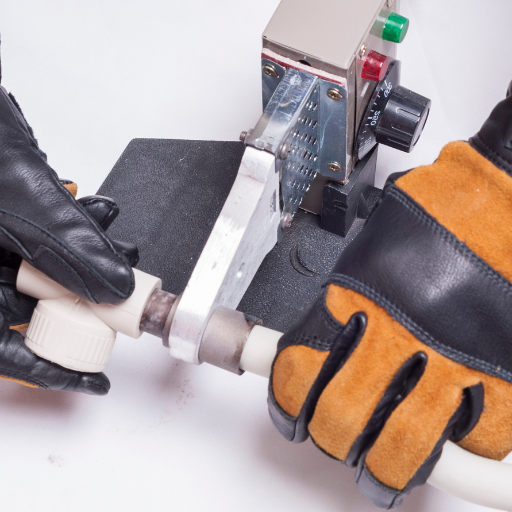
It demonstrates some reasonably unique properties, some of them being that it has a very low weight on top of having high endurance while staying relatively unaffected in most environments. Other characteristics include, the ability to withhold great amounts of stress while being flexible. This is very helpful since it does not crack commonly when bent repeatedly, making it ideal for the usage in packaging, automotive parts and other goods. Economically speaking, this material has one of the lowest masses in density, which helps keep the cost down while also improving the quality and efficiency.
Investigating the Mechanical Characteristics of Polypropylene
PP is known to be a resourceful material because it has great tensile strength, good impact resistance, and a great deal of impact. While also permitting the bearing of some degrees of load. Furthermore, it has a great flexural strength that helps it not permanently deform short of being damaged. Even when a substance is displaced from the part and room temperature conditions are encountered, the impact resistance is claimed to be even more effective. Additionally, polypropylene possesses a low friction coefficient, making it ideal for moving components because it is resistant to wear while remaining low friction; this alters the assumption of its durability. Overall, the said mechanical properties are sufficient in applications that include textiles, automotive, packaging, and more.
Chemical and Heat Resistance of Polypropylene
Polypropylene has excellent chemical resistance which makes it quite useful in environments that can be harsh. It withstands a large number of acids, alkalis, and organic solutions without losing its structure and effectiveness. This inertness and the plastic’s strength, toxicity, and easy fabrication make it optimum for construction in chemical storage tanks, piping systems, and laboratory apparatus. Furthermore, polypropylene has a melting temperature between 130℃ and 170℃ depending on the grade which makes it thermally stable. Its property of withstanding autoclaving above 120℃ and not getting affected too much makes it useful in food and medical packaging. Nevertheless, its resistance has been noticed to drop when exposed to strong oxidizing agents or UV radiation, which requires some changes or additives to improve its resistance under such conditions. Thus, These properties also demonstrate its strength and versatility of being applied in chemically and thermally extreme conditions.
In Some Ways why Polypropylene Could be Considered the Best Polymer
The thermoplastic polymers polyethylene (pe), polyvinyl chloride (pvc), and polyethylene terephthalate have other specific properties but Polypropylene pP for most industrial applications is in great question. One thing that stands out regarding its usage with components that need thermal processes more than 130 degrees. Course, PP loses its elasticity due to increased working temperature, but around 170, it relieves most of the stress applied around the component through melting. On the other hand, hight density polythelene is able to preform subzero impacts quite well, however that is accompanied by a lower elastic range of 120d.
In contrast to other polymers, Polyvinyl Chloride is way more durable, and most consumers have reported a more beneficial range of manufacturing temperatures; however, it does not have as much height as it requires lower temperatures, as it is less stiff and less thermally aggressive than most other acids on the market.
Speaking of packaging materials, Polyethylene Terephthalate is far superior as it impregnates materials with a wide range of tensile strength and binding opacity. However, for areas of worms greater than 250 degrees, it just so happens to become more well-rounded. However, it does have drawbacks, especially as cyclic heated substances.
PP can maintain its competitiveness amongst these polymers as it possesses chemical resistance, heat tolerance, and ease of processing. However, its application range may be short when it comes to extreme cold or the use of UV stabilization. The analysis presented in this paper stresses the importance of such factors as operational limits regarding temperature, chemical environment, as well as operational environment in the context of the selection of polymer for certain usage conditions.
What Are the Main Uses and Applications of Polypropylene?
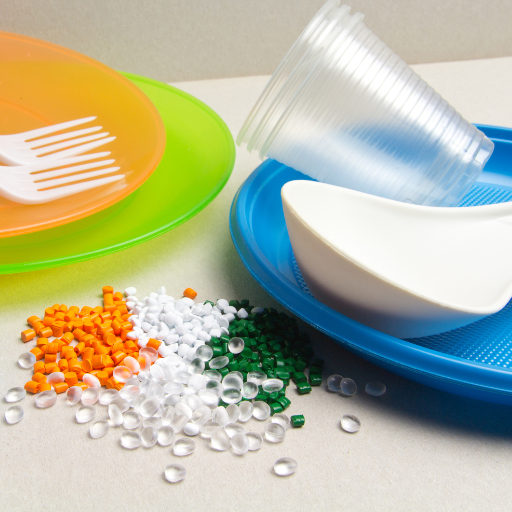
Owing to its multifaceted potential as well as its operating characteristics, polypropylene is employed in a variety of industries. In the construction of packaging, it is said to be a suitable material for making containers, caps, and flexible films since it is light and can resist moisture. The automotive industry needs polypropylene due to its tensile strength, chemical resistance, and toughness, and the industry uses it to produce interior trim, bumpers, and battery cases. Further, its application is not limited to the automobile industry as it also finds use in textiles where it is considered suitable for making fibers used for ropes, carpets, and even shopping bags owing to its tensile strength as well as stretch and wear resistance. Further use is evident in surgical instruments, lab apparatus, and piping, for which the properties of chemical inertness and heat tolerance are essential.
PP in Packaging and Foodstuff Containment
- Flexible Packaging Films: In the case of humectant containers used for snacks and sweets, and in the case of fresh fruits and vegetables, it has been noted that polypropylene is extensively used for the production of containers because it provides a very good barrier against water loss and has the added benefits of being strong yet lightweight.
- Rigid Containers: Rigid polymers with high elasticity, such as containers, yogurt tubs, take-out food boxes, and storage bins, do not have high densities but are strong. They are great at absorbing shock, which makes them useful in protecting against damage when moving the contents.
- Caps and Closures: Polypropylene is extensively used in the manufacture of caps and closures due to its strength and chemical inertness. These factors prevent leakage and product loss.
- Microwaveable Containers: Polypropylene is considered safe for use in portable food containers that can be heated in a microwave due to its ability to withstand heat. It survives thermal exposure without losing its strength and does not have additives that can leach into food.
- Disposable Utensils and Plates: Polypropylene is also used to manufacture disposable utensils, plates and cups due to their affordable price, low weight, and resistance to oils and grease.
- Multi-Layer Packaging Films: In more sophisticated applications, multilayer polypropylene films are used to take advantage of barrier protection, strength, and recyclability. These films are usually used in vacuum or retort pouches for long food life.
Automotive and Industrial Applications of Polypropylene
- Interior Automotive Components: The list of polypropylene products includes car dashboards, door panels, and seatbacks as car parts. Since they are light, vehicles consume less fuel and do not break easily when subjected to load during movement.
- Exterior Automotive Applications: Polypropylene is used to fabricate bumpers, trims, and other protective parts due to its excellent temperature resistance, scratch resistance, and UV and weatherproofing properties.
- Battery Casings: Polypropylene’s automotive applications for battery casings prove effective. The material has good acid resistance, so it can withstand working conditions while keeping things safe.
- Plastic Pipes and Fittings: Polypropylene is utilized for industrial piping systems because it is highly resistant to numerous chemicals, has low thermal conductivity, and is strong enough to hold high-temperature fluids. Thus, it is quite versatile when it comes to transporting fluids through various systems.
- Storage and Transport Containers: Polypropylene is largely employed in making industrial storage containers and bins. They have the right balance between strength and lightness, which allows transport without the fear of breaking while carrying heavy loads.
- Textiles and Fibers: Industrial-grade polypropylene fiber is used to make ropes, carpets, and geotextiles, as these materials provide great resistance against chemical exposure, water, and abrasion.
Medical and Consumer Product Uses of PP
- Medical Instruments and Devices: Polypropylene is employed in producing vials and syringes, specimen containers because it can be sterilized, its safe for use, and does not get chemical corrosion easily. Since it is inert, the potential of cross-contamination risks is low, thus making it applicable in surgical and even clinical fields.
- Packaging for Pharmaceuticals: This material is used extensively for the bottled and blister packs of pills and other pharmaceutical products. It protects the product from air, moisture, or any other external contaminant, so it doesn’t lose its properties. It is also quite easy to move around.
- Household Containers and Utensils: Because of its durability and heat tolerance, polypropylene is widely used to make food storage cups and microwavable dishes, which are commonly found in households. It does not leach out any harmful substances, hence assuring safety in any food-contact applications.
- Baby Products: Polypropylene is mostly used for safety and ease of use, making it the best material for making baby products such as feeding spoons, baby bottles, and even baby toys due to its nontoxic, lightweight, and shatter-resistant qualities.
- Personal Care Products: Polypropylene contains items like lotion dispensers, shampoo bottles, etc., which are used to wrap other beauty product containers because it’s able to resist chemical interactions with the contents and thus preserves the products longer.
How Does Polypropylene Compare to Other Plastics?
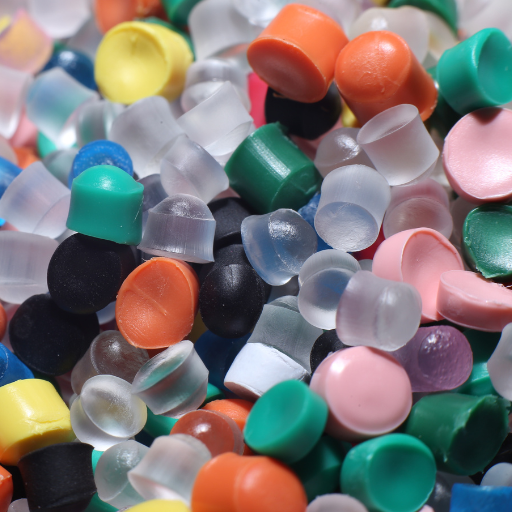
Polypropylene has the highest cost-performance ratio amongst plastics, offering high versatility, durability and practicality. In case a high temperature or stress is to be exerted, the properties of polypropylene allow it to replace polyethylene due to its higher heat tolerance and rigidity. Though PVC and Polypropylene have some similarities, they are completely different because PVC contains polyvinyl and other unfavorable additives that limit its chemical applications, while Polypropylene is a safe substitute for polyvinyl due to its stability in its chemical structure. Furthermore, Polypropylene has greater mechanical properties when compared to polystyrene, including a greater amount of impact strength and greater elongation to yield stress, thus allowing for more applications for a greater amount of industries. Due to its properties, Polypropylene in able to satisfy the needs of the system and become one of the most utilized polymer for both industrial and domestic use.
Comparison between PP and Polyethylene: Similarities Might Exist, Differences Prevail
PP and PE share the fact that both are thermoplastic and produced by chain polymerization of olefins. This allows both polymers to possess high moisture barrier properties, high strength-to-weight ratio, and high chemical resistance, making both polymers useful in many industrial processes. However, both of the materials have some significant differences that are worth mentioning. Significantly, polypropylene tends to have a higher melting point, typically ranging between 130-170°C, than polyethylene, which ranges between 115-135°C depending on its grade such as LDPE or HDPE. It means, PP would be preferable in applications that require high temperature endurance.
Additionally, PP tends to be used in more rigid and high-tensile components, such as automotive parts and rigid containers, as it is more stiff than PE. On the other hand, PE is employed in applications that require better flexibility and impact resistance, such as stretch wraps and squeeze bottles. It provides evidence regarding PP superiority towards structural and thermal applications and PE superiority towards softer and more adaptable applications.
The Benefits of Polypropylene in Relation to Other Types of Commodity Plastics
Polypropylene is, therefore, polypropolene is recognized as a very adaptable material in the industrial and commercial utilization as it is relatively more productive than other commodity plastics. One of such advantages is its melting point, which ranges between 130-170℃ and is higher than the average of certain other plastics such as polyethylene. Such high melting point gives polypropylene an edge in applications that necessitate a higher melting point, such as medical equipment sterilization and the making of shipping containers that can be put in microwave ovens. Apart from that, the tensile strength of polypropylene is around 30 – 40 MPa, which means that the affine elements get increased strength, elastic rigidity, and structural stability, which are hugely essential in the designing of automobile parts, packaging that is durable and a variety of consumer products.
Another important benefit is its remarkable resistance to fatigue as seen in its capability to withstand repeated flexing without fracturing or breaking, a quality that is sometimes referred to as a “living hinge” performance. This trait makes polypropylene ideal for flip-top caps and one-piece injection molded containers. Also, polypropylene has a low specific gravity of about 0.9 g/cm³, which helps reduce the weight of end goods for effective and efficient cost reduction in production and logistic chain. Its good resistance to acids, bases and solvents also increases its range of applications, such as in chemical storage and handling equipment. These properties, coupled with being cost efficient, lower the barrier to entering polypropylene as a material for tough and various applications.
Polypropylene in Comparison to Other Plastics: The Drawbacks
Although polypropylene possesses many advantages, it also has drawbacks. This thermoplastic has a relatively low melting point of about 130–170°C, limiting its application in places requiring increased heat resistance. In addition, polypropylene suffers from severe weathering when exposed to sunlight unless its UV additives are incorporated. Its surface characteristics also pose problems, as it is an inherently non-polar polymer, meaning that paints, coatings, or adhesives require pretreatments to aid adhesion processes. Last, even though its stiffness is advantageous in many cases, polypropylene’s flexural strength seems relatively low at low temperatures which could limit its use in cold-weather applications.
What Makes Polypropylene an Ideal Material for Various Industries?
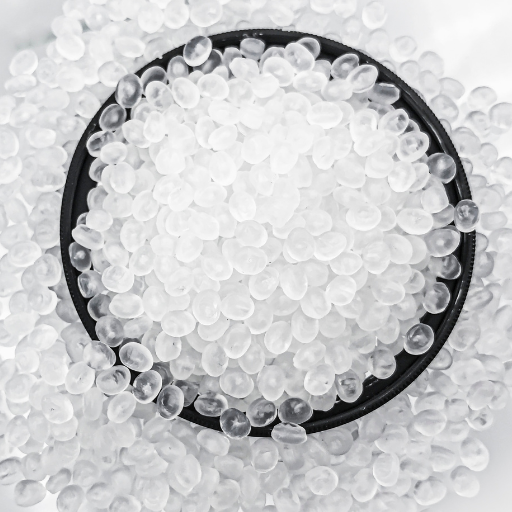
Polypropylene is highly valued across industries due to its exceptional balance of properties, including lightweight composition, chemical resistance, and cost-effectiveness. It demonstrates superior durability and flexibility, which makes it suitable for packaging, automotive components, and textiles. Furthermore, its resistance to most chemicals, including acids and bases, enhances its suitability for industrial applications. The material’s ability to be easily molded and its reusability provide additional advantages for manufacturers seeking efficient production and sustainable solutions.
Cost-Effectiveness and Versatility of PP
Polypropylene’s cost-effectiveness arises from its low production costs and efficient manufacturing processes. This thermoplastic’s low density, approximately 0.905 g/cm³, reduces material usage while maintaining mechanical durability, making it an economical option for large-scale applications. Its versatility is evident through its wide range of applications, from automotive components to consumer goods, due to properties such as a melting point of around 130–171°C and a tensile strength typically ranging from 25 to 40 MPa. Additionally, its recyclability and chemical resistance further enhance its industrial appeal, providing a practical and sustainable choice for diverse manufacturing needs.
Environmental Impact and Recyclability of Polypropylene
Polypropylene is considered an environmentally favorable material due to its recyclability and relatively low environmental footprint during production. It can be recycled multiple times without significantly degrading its properties, reducing the need for virgin material. Additionally, advancements in mechanical and chemical recycling processes are increasing the efficiency and effectiveness of polypropylene recycling. However, improper disposal remains a concern, as polypropylene can contribute to landfill waste and environmental pollution if not properly managed. Ensuring robust waste management systems and promoting recycling practices are critical to mitigating these impacts.
Challenges in Recycling and Sustainability of PP
Recycling polypropylene presents several challenges, primarily related to contamination and material degradation. Mixed plastics can make sorting difficult, reducing the quality and reusability of recycled polypropylene. Additionally, the energy-intensive nature of some recycling processes can offset the environmental benefits. To enhance sustainability, efforts must improve recycling infrastructure, develop advanced sorting technologies, and increase public awareness to ensure proper disposal and separation of polypropylene products.
How is Polypropylene Processed and Manufactured into Products?
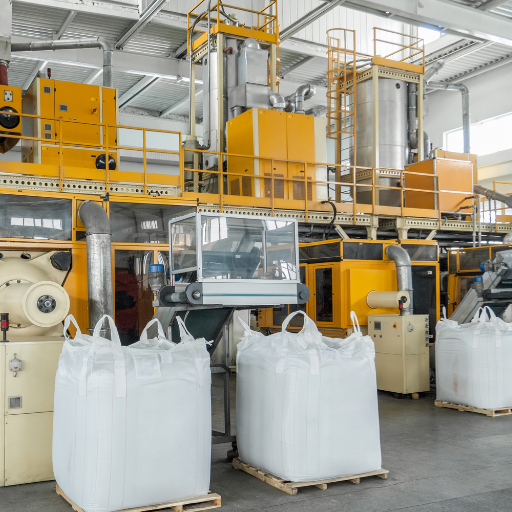
Polypropylene is characterized by a series of stages including polymerization, melting, and shaping to prepare final products. The processing starts with polymerization of propylene monomers which occurs in the reactors under controlled temperature and pressure by using catalysts like Ziegler-Natta or metallocene. This leads to the manufacture of polypropylene resin in pellet or granule forms. Such resin pellets are put through either extrusion or injection molding to yield finished products. When molten, polypropylene can be formed into different shapes depending on the end use by means of blow molding, thermoforming, or fiber spinning. After that, the substance becomes cooler and solid again; the shaped product ranges from bottles and containers to automobile parts and fabrics. During processing, additives like stabilizers, colorants, and fillers may also be used to improve some final product characteristics or appearance.
Injection Molding and Other Processing Techniques for PP
One of the key advantages of applying injection molding to the manufacturing process is the high efficiency in producing polypropylene components. The process starts by heating polypropylene pellets in a barrel until they increase in temperature and then melt within the barrel. Once the polypropylene is fully mixed and melted, the mixed material is injected into a cavity of a mold, which is under high pressure and can typically range from 700 to 2000 bar. The molten polypropylene takes the shape of the mold, and upon cooling it, it eventually solidifies. Factors such as melt temperature, which varies from 200 – 280 degrees centigrade, the temperature of the mold, which also varies from 10 to 80 degrees, as well as the injection speed impact the overall quality of the component that has been manufactured, thus injection parameters have to be defined based on the design and application.
Thermoforming and blow molding are also alternate processes of manufacturing items from polypropylene. Blow molding’s main application is the production of empty space-filled surfaces like bottles by blowing compressed air into a molten polypropylene already in a mold. Polypropylene sheets are heated to a desired temperature sufficient enough to soften the material, allowing them to be shaped through thermoforming. Both methods depend on controlled temperature and pressure to serve their purpose without damaging the materials.
Changes in Polypropylene Product Manufacturing
The recent developments in the manufacturing of polypropylene products are more oriented towards the specifications of the end users, optimization of the material, and enhancing efficiency of the manufacturing progress. New polymerization techniques have led to the improvement of several grades of polypropylene which are characterized by high impact, thermal stability, and high transparency. Also, due to the development of mechanical and chemical polypropylene recycling processes that did not destroy its material, recycled polypropylene is now increased use in industrial products. Smart technologies and automation are now being incorporated to improve production processes and reduce waste and operational costs, enabling organizations to meet strict environmental measures whilst still being economical.
Issues of Quality Control and Testing in Polypropylene Production
Quality assurance, and testing processes in polypropylene production are important to ensure that the material meets particular characteristics and can perform satisfactorily within the market’s requirements. Some typically include the melt flow rate (MFR), tensile strength, and impact resistance, and these methods would involve the analysis of physical, mechanical, and thermal properties. However, chemical composition analysis is conducted using spectroscopic methods such as Fourier Transform Infrared (FTIR) spectroscopy where its thermal behavior is evaluated via differential scanning calorimetry (DSC). A high-density level, isotacticity and crystallinity testing is done on a visual level in order to eliminate batch defects. This systematic and orderly approach ensures that the demanded specifications for all final products for industrial use are fully complied with.
Reference sources
Frequently Asked Questions (FAQs)
Q: What is PP plastic and how is polypropylene made?
A: PP plastic, or polypropylene, is a thermoplastic polymer used in a wide variety of applications. Polypropylene is made through a process called polymerization of propylene gas. It’s derived from petroleum or natural gas and is the second most widely used plastic after polyethylene. The resulting material has properties that are similar to polyethylene but with a higher melting point and improved strength.
Q: What are the key material properties of polypropylene?
A: Polypropylene has several important material properties that make it versatile for various applications. These include low density, good chemical resistance, high fatigue resistance, and good impact resistance. It also has a relatively high melting point compared to other plastics, making it suitable for applications involving heat. Additionally, PP is resistant to many solvents and chemicals, has excellent electrical insulation properties, and is relatively inexpensive to produce.
Q: What are the common uses of polypropylene and applications of PP?
A: Polypropylene plastic uses are numerous due to its versatility. Some common applications of PP include packaging materials, plastic bottles, food containers, automotive parts, textiles (such as ropes and carpets), laboratory equipment, and medical applications. It’s also widely used in consumer goods like reusable containers, furniture, and toys. In the industrial sector, PP is used for pipes, fittings, and various mechanical parts.
Q: How does the density of PP plastic compare to other materials?
A: The density of PP plastic is relatively low compared to many other materials, including other plastics. It typically ranges from 0.895 to 0.92 g/cm³, which makes it lighter than water. This low density contributes to its popularity in applications where weight is a concern, such as in automotive parts to reduce vehicle weight and improve fuel efficiency. The low density also makes PP an excellent choice for floating applications and buoyancy aids.
Q: What is the chemical resistance of polypropylene?
A: Polypropylene has excellent chemical resistance, which is one of its most valuable properties. It’s resistant to many acids, bases, and organic solvents at room temperature. This makes PP plastic often used in laboratory equipment, chemical storage containers, and industrial applications where exposure to harsh chemicals is common. However, it’s important to note that while PP has good resistance to many chemicals, it can be degraded by strong oxidizing agents and some chlorinated solvents.
Q: What is the difference between polypropylene homopolymer and copolymer?
A: Polypropylene can be produced as either a homopolymer or a copolymer. Polypropylene homopolymer is made entirely from propylene monomers, resulting in a more rigid and crystalline structure. It has higher strength and stiffness but lower impact resistance. Copolymer PP, on the other hand, incorporates a small amount of ethylene during polymerization. This results in a material with improved impact resistance and low-temperature toughness, but slightly lower strength and stiffness compared to the homopolymer.
Q: How recyclable is PP plastic and what are the challenges in PP recycling?
A: PP plastic is recyclable, and it’s identified by the recycling symbol with the number 5. However, PP recycling faces several challenges. One issue is contamination, as PP is often used in food packaging and can retain odors or residues. Additionally, different grades of PP may have varying melting points, which can complicate the recycling process. Despite these challenges, recycled PP can be used to make various products, including automotive parts, storage bins, and outdoor furniture. Improving PP recycling rates and technologies remains an important focus in waste management efforts.
Q: What are some advantages of using PP plastic in packaging material?
A: PP plastic is widely used as a packaging material due to several advantages. Its low cost makes it economical for mass production. The material’s good chemical resistance helps protect contents from degradation. PP’s clarity allows for transparent packaging options, while its low density reduces shipping weights. It also has excellent moisture barrier properties, making it suitable for food packaging. Additionally, PP’s high heat resistance allows for hot-fill applications and microwaveable containers. These properties, combined with its recyclability, make PP a popular choice in the packaging industry.

